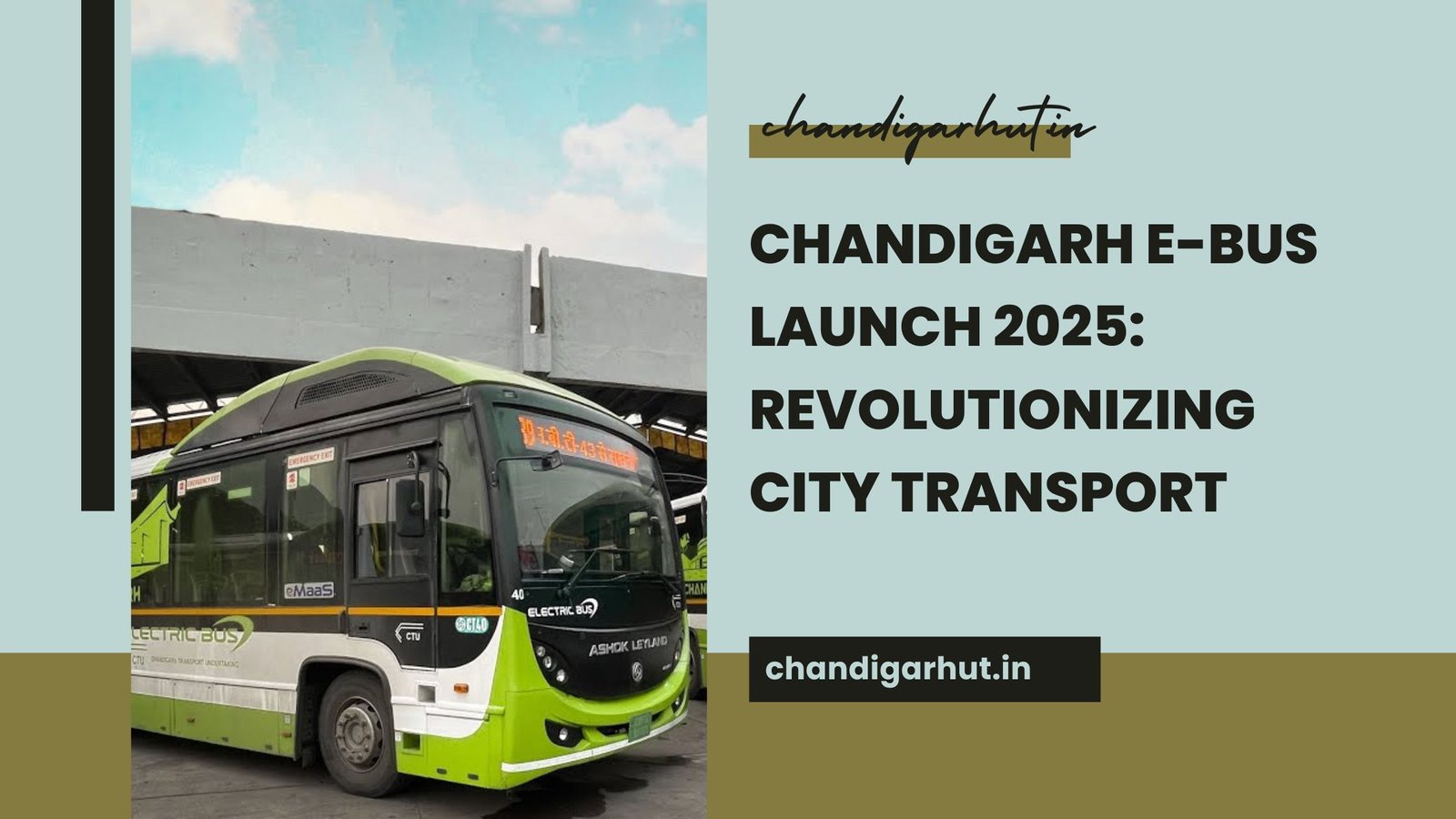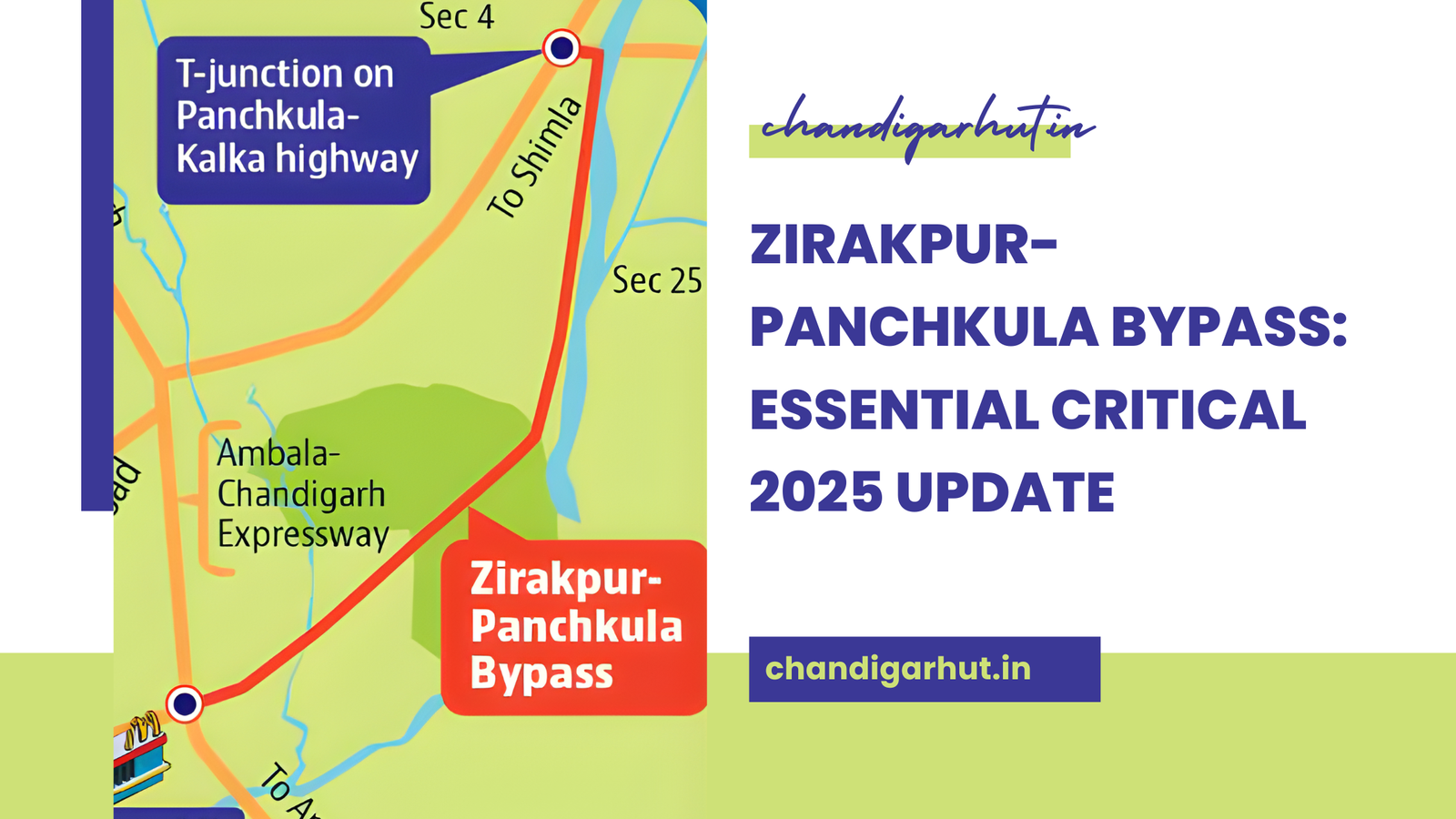The Chandigarh E-Bus Launch 2025 marks a defining moment for the city’s public transport system. The UT administration is preparing to introduce 25 brand-new electric buses in November 2025, paving the way for a complete fleet replacement of 100 e-buses over time.
This major development, reported by The Times of India, signifies a bold commitment to sustainable mobility, improved commuting comfort, and reduced pollution in the City Beautiful. The Chandigarh E-Bus Launch 2025 represents more than new buses — it’s a movement toward cleaner air and a smarter transport future.
Key Takeaways
- 25 new e-buses to arrive in November 2025 under the Chandigarh E-Bus Launch 2025 initiative.
- Total of 100 electric buses planned to replace diesel vehicles.
- Aim: cleaner transport, improved comfort, and lower emissions.
- Delays caused by tender and legal clearances.
- Push toward sustainable, green public transport.
A Big Step Toward Sustainable Public Transport
The Chandigarh E-Bus Launch 2025 aligns with India’s national goals for clean energy and sustainable urban mobility. By transitioning from diesel to electric buses, Chandigarh will significantly reduce its carbon footprint, setting an example for other cities in the region.
Electric buses will not only cut greenhouse gas emissions but also help lower operational costs, decrease noise pollution, and enhance passenger comfort. This transformation is a milestone in Chandigarh’s mission to strengthen its Smart City initiative through sustainable mobility solutions.
Government’s Vision Behind the Chandigarh E-Bus Launch 2025
The Chandigarh E-Bus Launch 2025 is not just a transportation initiative—it is a reflection of the Union Territory administration’s long-term vision for a cleaner, smarter, and more sustainable city. Under the Smart City Mission, the Chandigarh Administration aims to make public transport the preferred choice for citizens by combining eco-friendly practices with modern infrastructure.
Officials from the Department of Transport and the Smart City Limited have outlined a roadmap that integrates electric buses with digital management tools, ensuring energy efficiency and reduced carbon dependency. This step falls under the broader Green Mobility Plan, which seeks to convert the entire CTU fleet to electric vehicles by 2030.
Additionally, the vision extends to urban planning—creating a seamless network of e-buses, cycle-sharing systems, and pedestrian-friendly zones. Through the Chandigarh E-Bus Launch 2025, the government hopes to redefine urban mobility by setting a precedent for all medium-sized cities aiming to balance modernization with sustainability.
Why the Chandigarh E-Bus Launch 2025 Matters
The Chandigarh E-Bus Launch 2025 is more than an infrastructure upgrade — it’s a major environmental reform.
Here’s why it matters:
- Cleaner Air: Electric buses will cut carbon and particulate emissions drastically.
- Quieter City: Noise pollution will reduce with smooth, silent e-buses.
- Fuel Efficiency: A shift from diesel to electricity will save crores annually.
- Smart City Synergy: The Chandigarh E-Bus Launch 2025 supports India’s Smart City and Sustainable Mobility missions.
How Chandigarh E-Bus Launch 2025 Will Improve Urban Air Quality
The introduction of electric buses under the Chandigarh E-Bus Launch 2025 will play a transformative role in improving the city’s air quality. According to environmental assessments, public transport contributes a significant portion of Chandigarh’s daily carbon emissions. The replacement of diesel buses with electric ones could reduce CO₂ emissions by up to 30% annually, helping the city maintain healthier air standards.
Electric buses eliminate tailpipe emissions, which means pollutants like nitrogen oxides (NOₓ), particulate matter (PM2.5), and carbon monoxide will see a drastic reduction. This cleaner transport mode is expected to directly benefit public health, especially for children, the elderly, and those with respiratory issues.
In addition, lower noise pollution from electric buses contributes to a more peaceful urban environment. Together, these improvements will make Chandigarh’s air cleaner and its streets calmer, reinforcing the “City Beautiful” image that the administration seeks to preserve through the Chandigarh E-Bus Launch 2025.
Chandigarh’s E-Bus Plan: Timeline & Rollout
Under the Chandigarh E-Bus Launch 2025, the first phase will deliver 25 electric buses in November 2025.
| Phase | Timeline | Number of Buses | Focus |
|---|---|---|---|
| Phase 1 | Nov 2025 | 25 | City-core routes |
| Phase 2 | Early 2026 | +35 | Suburban expansion |
| Phase 3 | Mid-2026 | +40 | Diesel replacement |
By mid-2026, Chandigarh will proudly operate one of the largest fully electric city bus fleets in North India.
Environmental & Economic Benefits
The Chandigarh E-Bus Launch 2025 promises major environmental and financial gains.
Environmental Impact:
- Up to 80% emission reduction.
- Improved air quality index across the city.
- Supports India’s net-zero emission goals.
Economic Impact:
- Lower maintenance and fuel costs.
- Reduced diesel import dependency.
- Long-term savings for the administration.
Modernization of Public Transport
The Chandigarh E-Bus Launch 2025 also introduces a smart mobility ecosystem.
Key upgrades include:
- Digital ticketing and QR payments.
- GPS-based real-time tracking.
- Modern bus shelters with digital displays.
- Air-conditioned and accessible low-floor buses.
The initiative aligns with Chandigarh’s vision of making public transport eco-friendly, efficient, and passenger-centric.
Challenges and Delays
Despite its promise, the Chandigarh E-Bus Launch 2025 has not been without challenges. The project faced initial delays due to tender disputes and legal hurdles that postponed the arrival of buses earlier this year.
However, the administration has since streamlined approvals and vendor agreements to ensure a timely rollout by the end of November 2025. These challenges highlight the complexities involved in executing large-scale, sustainable public transport projects in India.
Expert Insights on the Chandigarh E-Bus Launch 2025
“The Chandigarh E-Bus Launch 2025 is a timely step toward sustainable urban mobility. Electric buses will redefine how people move while keeping the city’s air clean.”
— Dr. Meenakshi Arora, Environmental Policy Analyst
Experts believe this initiative will serve as a model for green transport in other Tier-2 cities of India.
Expected Routes & Passenger Experience
During the initial phase of the Chandigarh E-Bus Launch 2025, the buses are expected to operate on:
- Sector 17 – Sector 43 Bus Stand
- PGI – IT Park Route
- ISBT 17 – Industrial Area Phase 1
- Sector 22 – Sector 34 Market
Commuters can expect:
- Air-conditioned comfort
- Silent rides
- Mobile charging & Wi-Fi
- Faster, smoother transit experience
Key Features of Chandigarh’s New E-Buses
| Feature | Specification |
| Battery Range | 150–200 km per charge |
| Charging Time | 2–3 hours (fast) |
| Passenger Capacity | 35–40 |
| Accessibility | Wheelchair ramps |
| Technology | GPS, CCTV, Digital Display |
| Comfort | Air-conditioned, low-floor design |
These specs make the Chandigarh E-Bus Launch 2025 a game-changer for both comfort and sustainability.
Diesel vs Electric Bus: Cost Comparison
| Parameter | Diesel Bus | Electric Bus |
| Fuel Type | Diesel | Electricity |
| Running Cost/km | ₹55–₹60 | ₹30–₹35 |
| Maintenance | High | Low |
| Lifespan | 10 years | 15 years |
| Emissions | CO₂, NOₓ | Zero tailpipe emissions |
Clearly, the Chandigarh E-Bus Launch 2025 offers economic and ecological advantages over traditional diesel buses.
Quick Summary – Chandigarh E-Bus Launch 2025 Snapshot
| Metric | Details |
| Initiative | Chandigarh E-Bus Launch 2025 |
| Phase 1 Delivery | November 2025 |
| Total Fleet Size | 100 electric buses |
| Implementing Authority | Chandigarh UT Administration |
| Goal | Sustainable, zero-emission transport |
| Primary Benefit | Reduced pollution & modern commuter experience |
Lessons for Other Indian Cities from Chandigarh E-Bus Launch 2025
The Chandigarh E-Bus Launch 2025 stands as a powerful example for other Indian cities aiming to transition toward green public transport. Chandigarh’s strategic planning, from procurement to infrastructure setup, shows that sustainable mobility is achievable through phased execution and stakeholder coordination.
One key lesson is the importance of integrating policy with practicality. Chandigarh has not only introduced electric buses but also backed the rollout with strong administrative and technical planning. By ensuring charging infrastructure, maintenance contracts, and trained staff are ready before full deployment, the city has minimized operational risks.
Another takeaway is citizen engagement. Public awareness campaigns about eco-friendly transport and the benefits of zero-emission buses have helped create community support. Other urban centers can adopt similar strategies to encourage people to shift from private vehicles to electric public transport.
Financially, the city’s Public–Private Partnership model under the Chandigarh E-Bus Launch 2025 demonstrates that combining government subsidies with private investment can make large-scale e-mobility projects viable. This hybrid approach not only distributes costs efficiently but also ensures long-term operational sustainability.
Lastly, the Chandigarh initiative underscores the need for data-driven monitoring. Through smart route management and digital ticketing, authorities can analyze ridership trends, battery performance, and maintenance patterns—key insights for continuous improvement.
FAQs
Q1. What is the Chandigarh E-Bus Launch 2025?
👉 It’s a city initiative to introduce 100 new electric buses, starting with 25 in November 2025.
Q2. Why is the Chandigarh E-Bus Launch 2025 important?
👉 It reduces air pollution, promotes green mobility, and modernizes public transport.
Q3. Which routes will the e-buses operate on?
👉 Likely on Sector 17–43, PGI–IT Park, and Industrial Area routes.
Q4. What caused delays in the Chandigarh E-Bus Launch 2025?
👉 Legal and tender-related issues delayed earlier rollouts.
Q5. Who is implementing this project?
👉 The Chandigarh UT Administration.
Final Verdict: Chandigarh’s Electric Future
The Chandigarh E-Bus Launch 2025 is a milestone in India’s electric mobility journey.
With 25 buses set to hit the roads soon and more to follow, the city is steering toward a cleaner, quieter, and smarter commuting era.
The project reinforces Chandigarh’s position as a pioneer in sustainable transport, inspiring other cities to follow suit.
Conclusion: Stay Tuned with Chandigarh UT
The Chandigarh E-Bus Launch 2025 is not just a fleet upgrade — it’s a promise for a greener tomorrow.
Chandigarh’s electric bus rollout proves that sustainable change is possible with the right planning and persistence.
As the first fleet hits the road, residents can look forward to a cleaner, quieter, and more efficient commute.
Stay updated with the latest developments on Chandigarh’s e-mobility revolution only on 👉 Chandigarhut.in — your trusted source for verified, expert-driven news from the heart of the City Beautiful.










